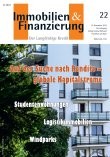Sie befinden sich hier: Home › Immobilien & Finanzierung › Themenschwerpunkte › Aufsätze › Global markets, local knowledge: the evolving nature of real estate investment
Aufsätze
15.11.2015
Kapitalmarkt
Global markets, local knowledge: the evolving nature of real estate investment

Abbildung 1: Europe Direct Real Estate Investment in EUR bn Source: JLL

Dieser Artikel ist Teil unseres Online-Abo Angebots.
Immobilien & Finanzierung, Ausgabe vom 15.11.2015, Seite 796
Aufsätze
4,50 €
2027